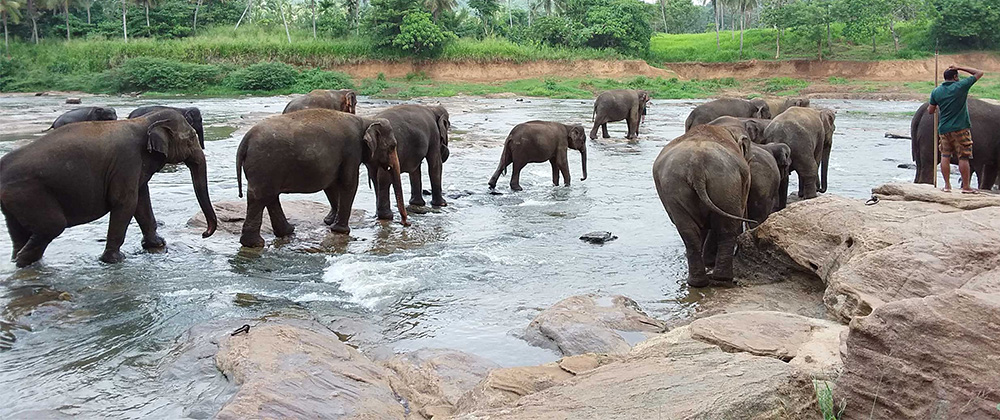Research Output
Aversive Geofencing Technology to Mitigate Human-elephant Conflict
Determine the effectiveness of animal-borne aversive geofencing device (e.g. collar) in managing elephant movement thereby mitigating human elephant conflict
Surendranie Cabral de Mel
Published on Thu, 01/30/2020 - 16:22

Aversive Geofencing Technology to Mitigate Human-elephant Conflict
Determine the effectiveness of animal-borne aversive geofencing device (e.g. collar) in managing elephant movement thereby mitigating human elephant conflict
Threats to biodiversity are increasing and rapid growth of the human population is one of the key factors that impacts Earth’s biodiversity. Anthropogenic activities such as urbanisation and agricultural expansion resulting in habitat loss, habitat alteration, increased pollution and diseases threaten wildlife and drive species towards extinction. Rising human population is competing with wildlife for land and other resources, resulting in conflict. The Asian Elephant (Elephas maximus) play a major role in human-wildlife conflict across their extended range. Asian elephant is listed as Endangered in the International Union for Nature Conservation (IUCN) Red List of threatened species, as their range has reduced significantly during the past few decades and populations are declining in many range countries.Conflict between humans and elephants has resulted in the death of both elephants and humans and large scale damages to crops and property.
Keeping elephants away from humans or humans away from elephants is widely done to reduce conflict, with conservation fences becoming an important management tool. Electric fences are the most commonly used method to mitigate human-elephant conflict both in Africa and Asia. They can delineate a defined geographic unit where managers can separate animals from their threats. However, they are expensive to build and maintain, create undesirable non-target impacts, may also facilitate inbreeding due to isolated populations, disrupting evolutionary processes and can be ineffective given that elephants sometimes learn to break these fences. Many of current methods used to mitigate human elephant conflict have been ineffective in the long-term and address only the symptoms rather than the root cause of conflict. The rise in incidents of conflicts with elephants has triggered the need to seek for alternative and more flexible options to mitigate this problem.
Use of aversive geofencing devices (AGDs), is a novel approach currently used on domestic farm animals for grazing management. This allows farmers to create virtual fences using computer software, while the GPS collars are programmed to emit an aversive sound and/or shock automatically when the animal reaches virtually fenced boundaries. This recent advancement in virtual fencing technology has the potential to revolutionise the management of human elephant conflict, but require field-testing and refinement. This project, funded by a National Research Council grant will test AGDs on captive Asian elephants in Sri Lanka at Pinnawala Elephant Orphanage in a linked series of pen trials focussing on product design, efficacy and the welfare of elephants. This project is conducted by Prof. Saman Seneweera, Mr. Malitha Senanayake and Ms. Surendranie Cabral de Mel, in collaboration with Dr. Benjamin Allen of University of Southern Queensland, Prof. Devaka Weerakoon of University of Colombo and Prof. Ashoka Dangolla of University of Peradeniya. The project is expected to yield an AGD for elephants, for potential larger-scale use in Asia and possibly Africa.
Surendranie Cabral de Mel
Research Assistant
National Institute of Fundamental Studies
Sri Lanka
Email : surendranie.ca@nifs.ac.lk